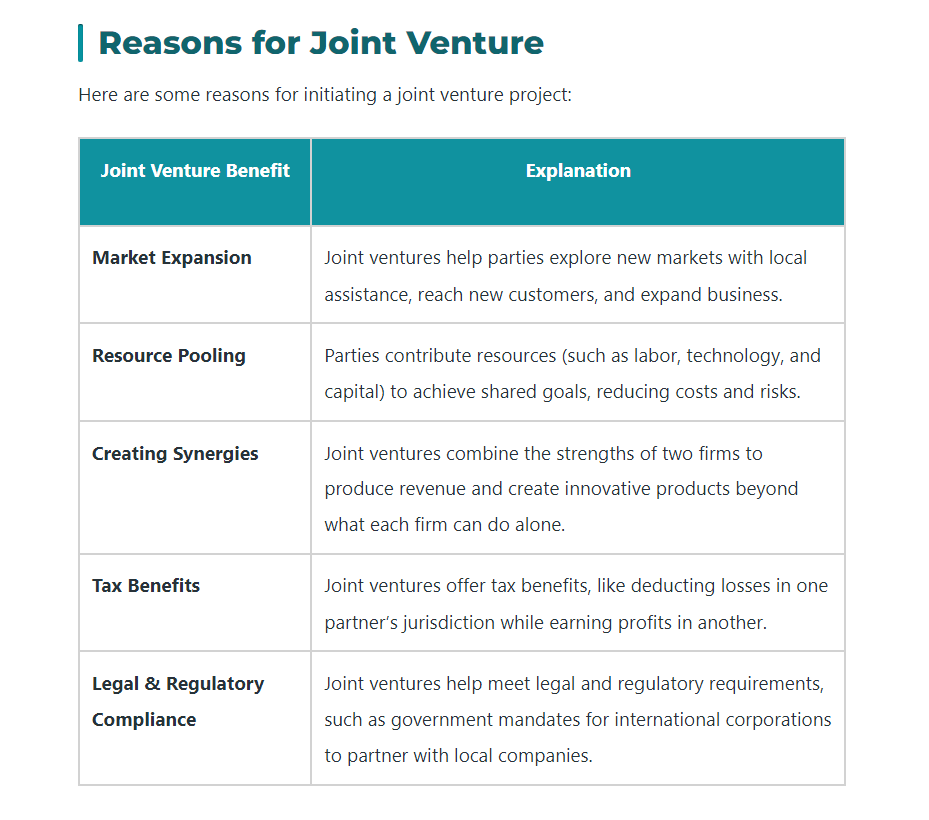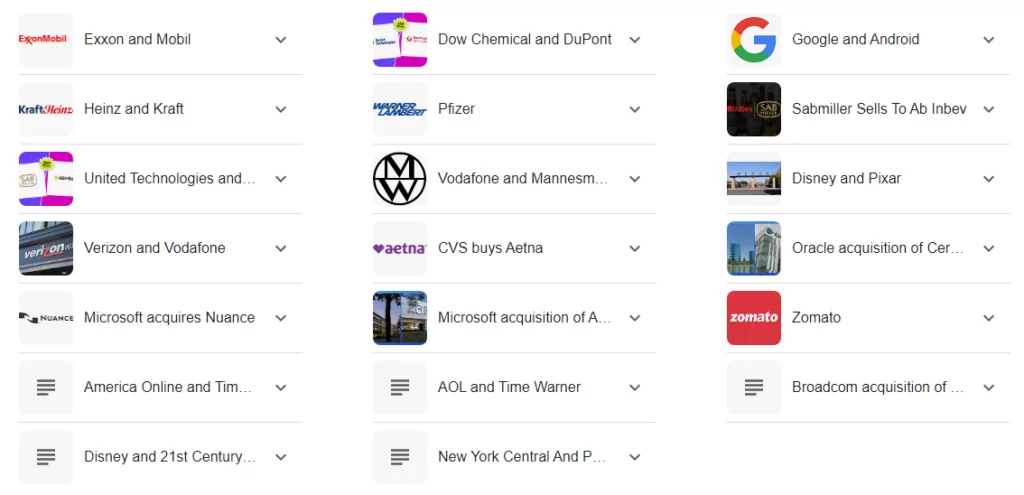
In this post
Are you having difficulty creating the right market expansion strategy to venture into new markets? You want to take your business global, don’t you?
If so, let us dive right in.
Creating a successful market expansion strategy for your company is harder than most business leaders first assume.
First-time growth managers often think it’s as simple as replicating their local growth strategy. That is until they fall flat on their faces.
If this is all new to you…
Expanding into new markets involves more than copy-pasting what’s working in your home market. International expansion strategies need close attention since there are many variables that even the best executives miss.
And do you know what the funny part is?
Executing successful market expansion strategies is not a challenge for small businesses only. Large corporations with big marketing departments and huge budgets aren’t spared either.
In the past, many big-name brands have failed spectacularly when implementing international expansion strategies.
Famous examples include Home Depot in China, Starbucks in Israel, and Walmart in several countries. We will talk about how these companies failed later in the article. You will chuckle when you hear the Walmart fail story in Korea, so stick around for that 😀
Let’s move on.
With growth being a top priority for over 51% of CEOs according to a recent Gartner report, you can’t afford to be left behind.
I mean…
Taking your products to more countries is a fantastic way to fuel growth and remain competitive in an increasingly globalized economy.
Lag with your internationalization efforts and you’ll leave lots of money on the table and become irrelevant.
Now you don’t want that, do you?
In today’s post, we share easy ways to expand your business in new markets without the hustle.
What is an International Market Expansion Strategy?

Before we get into the nitty gritty, what animal are we calling an international marketing expansion strategy?
In its basic form, an international marketing expansion strategy is a plan that outlines how your company will expand, make money, and thrive in foreign countries.
The market expansion strategy includes all the approaches and methods you will carry out to penetrate foreign markets far from home.
In other words, it is a blueprint showing your team how the company plans to execute global expansion while increasing profits and reducing risks involved with these never-before-explored frontiers.
That’s much better, right?
You can think of it as the world domination master plan for your company.
On the surface, it seems pretty straightforward – you know, like something you could draw on a napkin while having coffee. How hard could it be for your US-based company to sell products in South Africa for instance?
Everybody does it. Apple does it. Google does it. Facebook did it.
But the bad news is it’s not easy to craft a market expansion strategy that delivers the desired results. You must put a lot of thought into your international market expansion strategy and involve all stakeholders.
Expanding into new markets can take many forms, so there are plenty of options from which to choose. Having a good grasp of the international expansion strategies at your disposal can help determine what’s a good fit for your company.
Here are some common strategies for product market expansion to explore.
Top 7 Popular Market Expansion Strategies

There are several strategies (or ways) to take your company international. You can stick to one strategy or combine several depending on your needs, budget, and business type, among other things.
No matter the strategies you decide to implement, it’s important always to choose what works for your business goals. If one strategy fails, you can always refine or review your approach or choose something entirely different.
Let us get to it.
1. Exporting Your Products as a Market Expansion Strategy
Do you manufacture physical products? If so, exporting the products to another country is a viable market expansion strategy to employ. This approach has worked tremendously well for many manufacturers all over the world.
There is no shortage of examples that demonstrate this market expansion strategy in action.
Car manufacturers such as Toyota and Hyundai execute this market expansion strategy effectively to reach customers across the world.
Need another example?
Consider the strategy that Chinese manufacturers use to reach a global audience.
For instance, most of our electronics, clothing, and other items in our homes are made in China, making a few entrepreneurs billionaires in the process.
Suffice it to say that you can find products made in China in the far reaches of the globe. That there, my friend, is market expansion at its best.
As a manufacturer in the US, you don’t have to reinvent the wheel. Just adapt the strategy to enter and expand in new markets the world over.
That said, you can sell directly to foreign customers or partner with third-party merchants such as export agents, distributors, and trading companies.
Plus, alongside your official website and other digital channels, you can sell on multiple online marketplaces that cater to a global audience.
With strategic marketing and positioning, you can quickly expand your market reach both offline and online.
2. Franchising and Licensing
Since their inception, companies such as KFC, McDonald’s, and Calvin Klein have since crossed international borders.
And do you know how they achieved this exponential market expansion for their products?
You guessed it.
They all put franchising and licensing into action. And it works!
That being said, what’s the difference between franchising and licensing?
You probably know this already, but if you are just starting or need a reminder:
- Franchising – With this model, you let businesses in other countries use your company’s business model and brand. This way, you penetrate more markets and earn revenue from initial franchisee fees and ongoing royalties. KFC, Hilton, and Starbucks are prime examples;
- Licensing – This strategy involves granting foreign companies the right to use your company’s intellectual property. This includes trademarks, patents, and copyrights. You broaden your market and earn revenue via royalties. This is what Calvin Klein, Nike, and The Walt Disney Company do.
To learn more about this product expansion strategy, feel free to check out this Franchising vs. Licensing: What’s the Difference? article by NerdWallet.
3. Joint Ventures as a Market Expansion Strategy
Another popular market expansion strategy is joint ventures. With this model, your company partners with businesses in other countries to start a new company or work on new projects together.
How does the whole thing work?
For instance, let’s say I inherited a company ABC that owns high-quality cocoa farms but lacks the resources to build factories to process my produce.
Meanwhile, on the other side of the world, you own a company XYZ with the resources to process the produce but lack a dependable source of cocoa.
We can join hands and form a formidable company that makes cocoa-based products such as chocolate and whatnot. We can name our new joint venture whatever we want. Say, company COCO-AYZ.
On one hand, I provide plenty of high-grade cocoa to keep our new company running (and incessant creditors away).
On the other hand, you provide the resources we need to kickstart and grow our new company.
Through our joint venture, we can collaborate effectively to get the final products to a wider market and enjoy the rewards.
I hope that’s a decent example.
If not, here are popular examples of companies that formed successful joint ventures:
- Molson Coors and SABMiller;
- Microsoft and General Electric;
- Walmart and Eko;
- Boeing and Lockheed Martin;
- The Walt Disney Company, News Corporation, Comcast’s NBC Universal, and Providence Equity Partners;
- BMW and Brilliance Auto Group.
You must be familiar with the above companies.
Or not.
What you’re probably familiar with are the joint ventures that emerged when the above companies joined hands. For instance, Molson Coors and SABMiller gave birth to MillerCoors.
You’re also probably familiar with Hulu, which is the joint venture formed to run programs from the above-mentioned media giants.
Can you guess which companies brought us Sony Ericsson?

4. Acquisitions and Mergers as Market Expansion Strategies
Another effective market expansion strategy is acquisitions and mergers.
Acquisition, as the name aptly suggests, involves buying and controlling businesses in foreign countries.
Instead of starting from scratch, you have an established launching pad.
The acquisition offers your company several benefits, such as:
- Reduced competition;
- Improved customer experience;
- Access to an established customer base;
- Established distribution channels;
- Market share;
- Access to technology and systems that already work in the foreign market;
- And more.
It also makes market entry a lot easier.
On the other hand, a merger involves combining two companies into one. So, instead of launching your supermarket chain in a different country, you could merge with an existing company for the same benefits that acquisition offers.
In most cases, acquisition and mergers go hand in hand. There are many examples of companies that executed this product expansion strategy successfully.
If you ask any newcomer, they will probably tell you Android is Google’s brainchild. But many people don’t know that Google acquired Android for $50 million in 2005. This allowed Google to enter the cellular phone market for the first time.
Here are more examples of acquisitions and mergers.

5. E-commerce and Digital Expansion
E-commerce and digital expansion as a strategy to expand into new markets is almost self-explanatory.
Well, unless you live under a rock (in which case you wouldn’t be reading this article).
The internet has made reaching far and wide audiences incredibly easy. It has eliminated geographical and traditional physical barriers that made expansion in the former days a tad difficult.
Today, you can whip up and launch successful digital marketing campaigns right from your desk with a couple of clicks. E-commerce and international digital marketing are cost-effective and efficient tools for any company that seeks to expand beyond the home market.
There are tons of resources to learn more about international e-commerce and digital marketing we can’t probably list everything here.
However, I found a quick PDF report that summarises global e-commerce and digital marketing strategies.
Here are some points I gathered from the report if you lack the time:
- It is easy to implement but comes with its challenges, just like any other market expansion strategy;
- E-commerce allows you to reach customers anywhere in the world, to sell both retail and wholesale;
- There are countless digital marketing strategies that you can use to build a global presence;
- Be prepared to navigate complex terrain that includes cultural adaptation, international shipping logistics, content localization, and managing various regulations and standards;
- You can gather a lot of useful data for your marketing campaigns easily;
- Multilingual SEO, content marketing, social media, and paid online adverts are crucial;
- Choose the right platforms, including your translation tool.
Many companies have implemented this strategy quite successfully over the years. My favorite example is Dollar Shave Club, which used a simple but humorous video to kickstart what is now a global multi-dollar billion company.
This video:
There are so many other successful e-commerce companies we can’t list them here.
But obvious examples include the likes of Amazon, eBay, AppSumo, Shopify, Warby Parker, Gymshark, and the list goes on and on.
Related Reading: What is Cross Border eCommerce (+ Tips on How to Implement it).
6. Strategic Alliances and Partnerships as Market Expansion Strategies
Still can’t figure out how you will expand into foreign markets?
Well, say a big hello to strategic alliances and partnerships.
Before we go further, I would like to mention that joint ventures are also a type of strategic alliance.
In this paragraph, we will discuss strategic alliances and partnerships that don’t involve creating a separate legal entity, as is the case with joint ventures.
Firstly, what are strategic alliances or partnerships? Spoiler alert: they are exactly what you think they are.
Simply put…
Strategic alliances and partnerships are collaborations between your company and foreign entities or government agencies.
Secondly, these kinds of international expansion strategies come with lots of benefits.
You can:
- Pursue common objectives like product development, research, market entry strategies, and marketing initiatives in foreign territories;
- Share costs and potential risks;
- Share expertise and technology;
- Gain access to much-needed distribution channels;
- Comply with local laws and regulations without hiccups;
- And more.
The main aim and benefit for your company, of course, is market expansion.
For instance, if you’re an infrastructure company looking to expand into other parts of the world, it pays to establish strategic alliances with local authorities in your countries of interest. Otherwise, your international expansion strategies with face tremendous resistance from the locals.
You know, like these folks: Indonesian Locals Push Back Against Chinese Infrastructure Investments.
7. Greenfield Investments and Subsidiaries
Last but not least, we have what is known as greenfield investments and subsidiaries.
A greenfield investment is a market expansion strategy that involves establishing new operations, entities, subsidiaries, or facilities in foreign countries
The term greenfield comes from the fact that, in most cases, the company, often a multinational organization, is starting a new venture from the ground up. Building offices, distribution hubs, production facilities, and living quarters. This often involves plowing and preparing a green field.
Greenfield investments and subsidiaries allow your company to:
- Build custom facilities;
- Have more control over operations;
- Have greater autonomy and flexibility;
- Establish a strong local presence.
Note, however, that this market expansion strategy involves significant up-front investment and higher risks.
Now that you know what an international market expansion strategy is, and some of the strategies you can use, let us move to the benefits.
Top 7 Benefits of International Market Expansion

According to a Wells Fargo report, 87% of US companies agree that international market expansion is necessary for long-term growth.
In addition, 69% of the respondents agree that emerging markets provide the greatest growth opportunities.
Still, many US firms are yet to take their business global.
If you’re still on the fence, the following benefits of international expansion might just give you the push you need.
1. Expanded Consumer Base
The most obvious benefit of international expansion is an expanded customer base.
Taking your business to other countries lets you access untapped markets that may be saturated or unavailable in your home country.
By tapping into new and diverse markets and customer segments, you can significantly expand your consumer base and increase your revenue potential.
2. Increased Brand Visibility
Executing an international expansion strategy successfully helps you to boost brand recognition and reputation across the globe.
A positive brand image enhances consumer trust, which attracts more customers and brand loyalty.
More customers and better brand loyalty culminate in brand advocacy and word-of-mouth marketing.
Keep in mind that 70% of customers buy more from brands they trust, and people spend 25% more money on trusted brands.
3. Diversification of Revenue Streams
Depending on a single revenue stream in your home market can expose your company to economic fluctuations and unforeseen events.
Taking your company global, on the other hand, allows you to diversify your revenue streams and spread risks.
If your company is not doing so well in one market, you can offset the losses by performing successfully in another market.
In addition, an international market offers you the chance to introduce new products, which can positively impact your revenue.
Coca-Cola is a good example of this. The company continues to perform well in multiple regions while introducing new brands regularly.
4. Competitive Advantage
Expanding into new markets offers your company a competitive advantage over your domestic-only competitors.
Firstly, customers believe you’re a forward-thinking company that has their best interests at heart.
Secondly, internationalization allows you to establish systems and a market presence in more markets compared to your competitors.
“Access to innovative technologies, cheaper resources, and the ability to adapt to different cultural norms allows them to offer unique products and services that appeal to a broader audience.” – Dr. Ariel King, LinkedIn.
5. Access to a Diverse Talent Pool
Another benefit of international market expansion is access to a diverse and wider pool of talent.
Why is this important?
Hiring international expertise and skills brings creativity, diversity, different languages, and innovation to your company.
This fosters inclusive and dynamic work cultures that boost productivity.
6. Foreign Investment Opportunities
Operating solely in the domestic market can keep you from enjoying various foreign investment opportunities available to global companies.
For instance, taking your company global can offer you access to cheaper resources and new technologies, helping your business to scale quickly.
Additionally, many foreign governments offer lucrative incentives such as tax cuts, commissions, and loans to companies that seek to invest in their countries.
7. Economies of Scale
One of the most overlooked benefits of expanding into new markets is economies of scale.
Serving international markets means dealing with a larger customer base with diverse demands.
This means you must increase production, which lowers your cost per unit.
Global companies that benefit from economies of scale can lower production costs and boost profitability.
With the benefits out of the way, let us now cover how to develop an effective market expansion strategy for your business.
How to Create a Market Expansion Strategy

While it might seem daunting initially, developing an effective market expansion strategy is easy if you have the right mindset and know what you’re doing.
That said, it’s important to create a strategy that covers everything from preparation, execution, and measuring results.
Let us get down to business.
1. Define Your Goals
The first step in creating a market expansion strategy is to define your goals. You can’t just shoot out of the blues and expect something to stick.
How else will you know if your market expansion strategy is working without well-defined and measurable goals?
With that in mind, what are you looking to achieve with your international expansion strategy?
Are you looking to:
- Increase sales and revenue?
- Boost brand awareness?
- Launch new products?
- Establish new markets?
- Improve profitability?
- Research and develop products?
- Reduce costs?
- Acquire new resources?
These are some of the goals to consider when defining the purpose of the expansion.
Set clear objectives that will guide your team to execute a successful strategy.
Otherwise, your strategy will be faulty from the onset. You will be like a headless chicken, running about until you finally stagger out of the new market, and give up on your expansion plans.
With a clear purpose, let us proceed to the next step.
2. Conduct Astute Market Research
We can’t emphasize this much, but running out to expand into new markets without proper research will only blow up in your face.
Is there even demand for your products or services in the new region you’re targeting?
Robust research should be the foundation of your market expansion strategy.
Why?
Solid research allows you to:
- Identify potential markets;
- Understand competition;
- Access local consumer behaviors and preferences;
- Analyze market demographics;
- Determine demand and opportunities.
For instance, if you sell skiing equipment, you wouldn’t want to waste resources marketing to tropical markets.
Here’s another funny example.
Because Walmart didn’t do adequate groundwork when expanding to Korea, they installed taller racks than local rivals.
As a result, Korean shoppers were forced to stretch or use ladders to reach items on high shelves 😀
In addition, they miserably failed to identify Korean shopping habits.
Koreans typically prefer daily outings to various local stores to shopping once a week at Walmart.
“They have stacks of goods in boxes,” said Lee Jin Sook, 46, a housewife sitting on a subway in Seoul. “That may be good for some American housewives who drive out in their own cars.” But Koreans, she said, prefer smaller packages: “Why would you buy a box of shampoo bottles?”
They made similarly catastrophic mistakes in Brazil, as you can read in this article: The Walmart Journey in Brazil: A Tale of Rise, Decline, and Acquisition.
Need more examples of companies that missed the mark because of poor research? Home Depot, Mattel, and eBay failed disastrously in China.
And here’s why Starbucks failed in Israel and couldn’t brew success in Australia.
3. Define Your Target Audience
One of the primary reasons why these giants failed in foreign markets is they didn’t understand the customer on the ground.
Most of the companies tried to impose the style and target audience profiles that worked in American stores.
They figured: if it works in the US, why wouldn’t it work in South Korea or China?
Boy were they wrong.
Sure, you are selling the same products but don’t make the mistake of assuming new markets have the same needs and interests.
That’s why your American target audience profile won’t work in a foreign market.
Define target audiences for different markets from scratch based on market research.
Don’t shoot yourself in the foot. You can learn more from Neil Patel in How to Find Your Target Audience.
4. Leverage Digital Marketing
Earlier, we mentioned that the internet has made it ridiculously easy to reach customers anywhere in the world.
To accelerate your market entry and expansion, employ all digital marketing tools and technologies at your disposal.
You have plenty of options in this area.
Firstly, You can employ search engine optimization (SEO) to appear in local search results in foreign markets.
Otherwise, potential customers might never find your business even when they are looking for the products you offer.
Secondly, take to social media marketing targeting customers in your intended markets. Note that some social media platforms are more prominent in some markets than others.
As such, you need to be strategic when designing your campaigns.
Thirdly, don’t forget email marketing.
When implemented well, email marketing has a high ROI of 4,000%!
In addition, deploy content marketing campaigns targeted at these new regions.
If you need a little help, check out this nifty PDF guide by HubSpot: Global Marketing Playbook.
Finally, don’t fail to implement e-commerce solutions and utilize online marketplaces to reach more customers.
5. Compliance with Laws and Regulations
This is pretty straightforward I guess and the responsibility of your legal department.
Before expanding internationally, ensure your strategy, business model and product offering aren’t breaking any laws.
Different countries have different legal requirements for foreign investors.
So, check in with your lawyer to avoid unpleasant surprises in the form of court battles and huge fines.
6. Localization and Translation
According to CSA Research, 76% of consumers in 29 countries said they prefer to purchase products with information in their native language.
In addition, 40% of the consumers said they would never buy from a website in other languages. You can see what that means for your international expansion strategies.
When expanding into new markets, ensure you are providing products and services in their native languages. That means you need to create a website with effective localization and translations.
Localization means offering a user experience that resonates with the locals. That means changing your product packing, among other things.
Translation involves converting your website content into other languages.
Don’t forget that localization and translation need you to have a good grasp of cultural nuances and preferences.
Luckily for you, localizing and translating your website needn’t be a challenge with a tool such as TranslatePress.
TranslatePress is a user-friendly solution for website translation and localization, making multilingual expansion accessible for big and small businesses.
TranslatePress Multilingual
Conclusion
We hope this long read gave you the blueprint you need to craft a sustainable market expansion strategy.
We’ve outlined the benefits, strategies, and a few things to consider when formulating your international expansion strategy.
While expanding into new markets, it pays to start with astute research to avoid common blunders.
After that, always keep the needs of your customers first and respect their culture and laws.
What’s your main takeaway?
Please share your tips, thoughts, and suggestions in the comment section below.



Brilliantly articulated, you’ve nailed the essence perfectly, just like the Best Electronic Dj mastering a track.
Thanks Devante for passing by and the compliment!